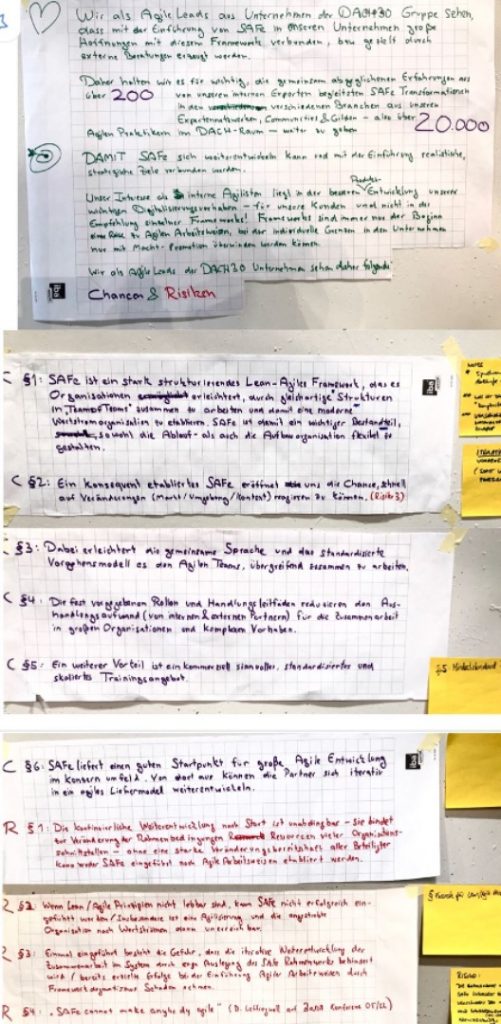DACH30 Statement SAFe® of 29.6.2022, Buchs, Switzerland.
(Use permitted under CCBYSA license):
We as Agile leads from companies in the DACH30 group see that with the introduction of SAFe® in our companies high hopes are associated with this framework or specifically generated by external consultations.
Therefore, we consider it important to share the commonly aligned experiences from over 200 SAFe® transformations supported by our internal experts in various industries from our expert networks, communities & guilds – i.e. over 20,000 Agile practitioners in the DACH region
So that SAFe® can evolve and realistic, strategic goals are associated with its adoption.
Our interest as internal Agilists lies in the better product development of our important digitization projects – for our customers and not in recommending individual frameworks! Frameworks are always only the beginning of a journey to Agile ways of working, where individual boundaries in companies can only be overcome with power promotion.
We as Agile leads of the DACH30 companies therefore see the following opportunities & risks:
Opportunities
O1: SAFe® is a highly structuring Lean-Agile framework that makes it easier for organizations to work together in „teams of teams“ through similar structures and thus establish a modern value stream organization. SAFe® is thus an important component to flexibly design both the process and the organizational structure.
O2: A consistently established SAFe® gives us the chance to react quickly to changes (market / environment / context).
O3: The common language and the standardized process model make it easier for the Agile teams to work together across the board.
O4: The fixed roles and action guidelines reduce the negotiation effort (of internal and external partners) for collaboration in large organizations and complex projects.
O5: Another advantage is a commercially viable, standardized and scaled training offering.
O6: SAFe® provides a good starting point for large-scale Agile development in a corporate environment. From there, partners can iteratively evolve into an Agile delivery model.
Risks
R1: Continuous development after launch is indispensable – it ties up resources at many organizational interfaces to change the framework conditions – without a strong willingness to change on the part of all stakeholders, neither SAFe® can be successfully introduced nor can Agile ways of working be established!
R2: If LEAN/AGILE principles are not livable, SAFe® cannot be successfully introduced/ In particular, agilization and the desired organization according to value streams is then unattainable.
R3: Once introduced, there is a risk that the iterative further development of collaboration in the system will be hindered by narrow interpretation of the SAFe® framework / successes already achieved in the introduction of Agile ways of working will be damaged by framework dogmatism.
R4: „SAFe cannot make anybody agile“ (quote Dean Leffingwell at Bosch conference 05/22).
